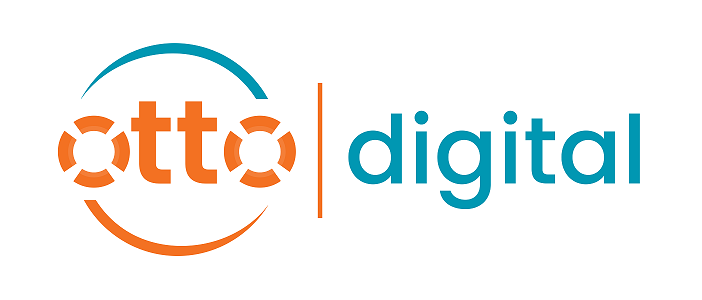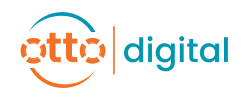Integrating Zoho CRM with Other Business Tools
Why Integrate Zoho CRM with External Platforms?
In today’s fast-paced business environment, managing customer relationships efficiently is crucial. Zoho CRM is a powerful platform, but its true potential is unlocked when it seamlessly integrates with other business tools. Integration enables automation, reduces manual data entry, and provides a unified view of customer data ultimately driving smarter decision-making.
Australian businesses, from SMEs to large enterprises, increasingly seek ways to enhance operational efficiency. That’s where Zoho CRM integration tools come in. By connecting Zoho CRM with ERP systems, marketing platforms, and accounting software, businesses can streamline workflows and boost productivity.
Common Integration Scenarios
There are several typical scenarios where integrating Zoho CRM with other software proves beneficial:
Syncing customer data between CRM and ERP for accurate inventory and sales tracking
Automating marketing campaigns by linking CRM with email marketing tools like Mailchimp
Connecting accounting software such as Xero for seamless invoicing and payment processing
Integrating communication tools like Slack to enhance team collaboration
Syncing eCommerce platforms such as Shopify for real-time order and customer management
Each scenario supports business tool compatibilityand smooth data flow, helping teams avoid silos and manual updates.
Key Business Tools That Work Seamlessly with Zoho
Zoho integrationsoffer extensive compatibility with popular business applications. Let’s dive into some of the key tools Australian businesses often pair with Zoho CRM:
Mailchimp
Mailchimp is a leading marketing automation platform. Integrating Zoho CRM with Mailchimp allows businesses to nurture leads with targeted email campaigns based on CRM data, boosting engagement and conversions.
Xero
Xero is a favourite accounting software among Australian SMEs. The Zoho CRM + Xero integration automates invoice generation, payment tracking, and financial reporting, reducing errors and saving time.
Slack
Slack integration enhances team communication by sending CRM alerts and updates directly to channels or individual users, keeping everyone aligned on sales progress and customer issues.
Shopify
Shopify integration helps eCommerce businesses sync customer orders, inventory status, and sales data between Zoho CRM and their online store, providing better customer service and sales insights.
Zoho CRM + ERP Integration Explained
ERP and CRM integration is critical for businesses aiming to unify front-office sales with back-office operations. When Zoho CRM is integrated with ERP systems, data related to inventory, orders, procurement, and financials is synchronised automatically.
This integration ensures:
Real-time visibility into stock and order status for sales teams
Accurate forecasting based on CRM and ERP data
Streamlined order fulfilment and reduced manual errors
Zoho’s open API and extensive marketplace allow for flexible ERP integrations tailored to the unique needs of Australian companies.
Email & Marketing Automation Platforms
Beyond Mailchimp, Zoho CRM supports integration with numerous email marketing and automation platforms. This capability enables targeted campaign management, lead scoring, and personalised communication based on customer interactions logged in Zoho.
Marketing automation connected to Zoho CRM helps businesses automate repetitive tasks, segment contacts, and measure campaign effectiveness essential for growth-focused teams.
Accounting and Invoicing Software Integration
Accounting integrations, such as with Xero or MYOB, are indispensable for maintaining financial accuracy and reducing double data entry. By syncing invoices, payments, and financial reports between Zoho CRM and accounting platforms, Australian businesses ensure:
Accurate revenue tracking
Faster billing cycles
Better cash flow management
These integrations foster smooth collaboration between sales and finance teams.
APIs and Webhooks: What You Need to Know
APIs (Application Programming Interfaces) and webhooks are the backbone of Zoho integrations. They allow different systems to communicate in real-time, sharing data instantly and triggering workflows.
Understanding API connections is vital for IT managers and system integrators planning complex integration projects. Zoho provides extensive API documentation and support, enabling custom integration solutions for diverse business needs.
Webhooks complement APIs by pushing event-driven updates to external systems without constant polling, optimising performance and responsiveness.
Choosing the Right Integration Strategy
Selecting the best approach for integrating Zoho CRM depends on your business size, complexity, and existing systems. Common strategies include:
Pre-built integrations: Quick and easy solutions using apps from the Zoho Integration Marketplace or third-party services like Zapier.
Custom API integrations: Tailored solutions built by developers for specific workflows and business rules.
Hybrid approach: Combining pre-built tools with custom API connections to maximise efficiency.
IT managers must assess factors such as data volume, security, and scalability before deciding.
Case Study: Zoho & Mailchimp Integration for Lead Nurturing
An Australian marketing agency used Zoho CRM integrated with Mailchimp to automate lead nurturing. By syncing contact lists and engagement data, they created personalised email journeys that boosted conversion rates by 30%.
Workflow automation reduced manual follow-ups, freeing up the sales team to focus on closing deals. This integration demonstrated how combining CRM and marketing automation tools drives tangible business outcomes.
Tools to Support Easy Integration (Zoho Flow, Zapier, etc.)
To simplify integration, tools like Zoho Flow and Zapier offer low-code or no-code platforms that connect Zoho CRM with hundreds of apps.
Zoho Flow is designed specifically for Zoho apps, offering native triggers and actions.
Zapier supports a broad range of third-party apps and is popular for connecting cloud services quickly.
These platforms empower system integrators and IT teams to automate workflows and synchronise data without extensive coding.
Conclusion
Integrating Zoho CRM with other business tools like ERP, marketing platforms, accounting software, and communication apps is essential for Australian businesses striving for operational excellence. By leveraging Zoho integrations, API connections, and workflow automation, organisations can streamline processes, improve data accuracy, and enhance collaboration.
For IT managers and system integrators, understanding these integration strategies and tools is key to designing seamless business operations that scale with growth.
Frequently Asked Questions
What are the best practices for integrating Zoho CRM with other software?
Best practices include defining clear business goals, choosing the right integration tools (like Zoho Flow or Zapier), ensuring data consistency, securing API connections, and testing workflows thoroughly before going live.
Can Zoho CRM be integrated with ERP systems used by Australian businesses?
Yes, Zoho CRM supports integration with many ERP platforms, either through pre-built connectors or custom API integrations, allowing seamless syncing of customer, order, and inventory data.
How does integrating Zoho CRM with marketing tools like Mailchimp improve business operations?
Integration enables automated, targeted email campaigns based on CRM data, which helps nurture leads, increase customer engagement, and improve sales conversion rates.
Are there tools to simplify Zoho CRM integrations without heavy coding?
Absolutely. Platforms like Zoho Flow and Zapier offer no-code or low-code solutions that allow businesses to connect Zoho CRM with hundreds of other apps easily and automate workflows.
What should IT managers consider when planning Zoho CRM integrations?
IT managers should evaluate system compatibility, data security, scalability, the complexity of workflows, and choose between pre-built connectors or custom API development based on business needs.
Can Zoho CRM integration help with accounting and invoicing?
Yes. Integrations with software like Xero or MYOB automate invoice creation, payment tracking, and financial reporting, improving accuracy and reducing manual effort.



